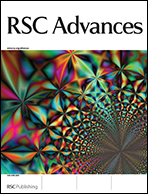High-throughput co-encapsulation of self-ordered cell trains: cell pair interactions in microdroplets†
Abstract
Droplet microfluidics is a booming sub-field of microfluidics that adds the benefits of confinement, including signal accumulation and isolation, to cell analysis. However, controlling the number of cells per droplet has been limited to using Poisson (random) encapsulation for the highest throughputs. The Poisson probability of a droplet containing one and only one cell is limited to 36.8%, and the probability of pairing two distinct cell types in a droplet is limited to 13.5%. Combining droplet microfluidics with inertial microfluidics, we present a device which efficiently co-encapsulates cell pairs in droplets at rates on the order of 6 kHz. We demonstrate particle co-encapsulation where 64% of droplets contained the correct one-to-one pairing, representing a nearly fivefold improvement to Poisson co-encapsulation. We also apply the device to encapsulate two separate strains of Chlamydomonas reinhardtii. C. reinhardtii is a single-cell microalgae with applications as a model organism, recombinant protein source, and potential source of multiple biofuels. After inducing gametogenesis by nitrogen starvation and thermally inducing flagella loss, we co-encapsulate separate mating-type plus (mt+) and mating-type minus (mt−) C. reinhardtii cells in droplets. Here, 29% of droplets contained one and only one cell of each mating type, over a twofold improvement to the Poisson co-encapsulation probability of 13%. Approximately one hour following deflagellation, gametes regained flagellar motility and mating ability within the droplets. The mated zygotes were stored in emulsion form without nutrient replenishment. After 17 days, both zygospores and, remarkably, some unmated gametes remained viable. When the emulsion was broken and plated on full-nutrient agar, zygospore germination, tetrad hatching, and then mitosis followed. In addition to algae, the device has the potential for confined interaction studies for a variety of cell types.


 Please wait while we load your content...
Please wait while we load your content...